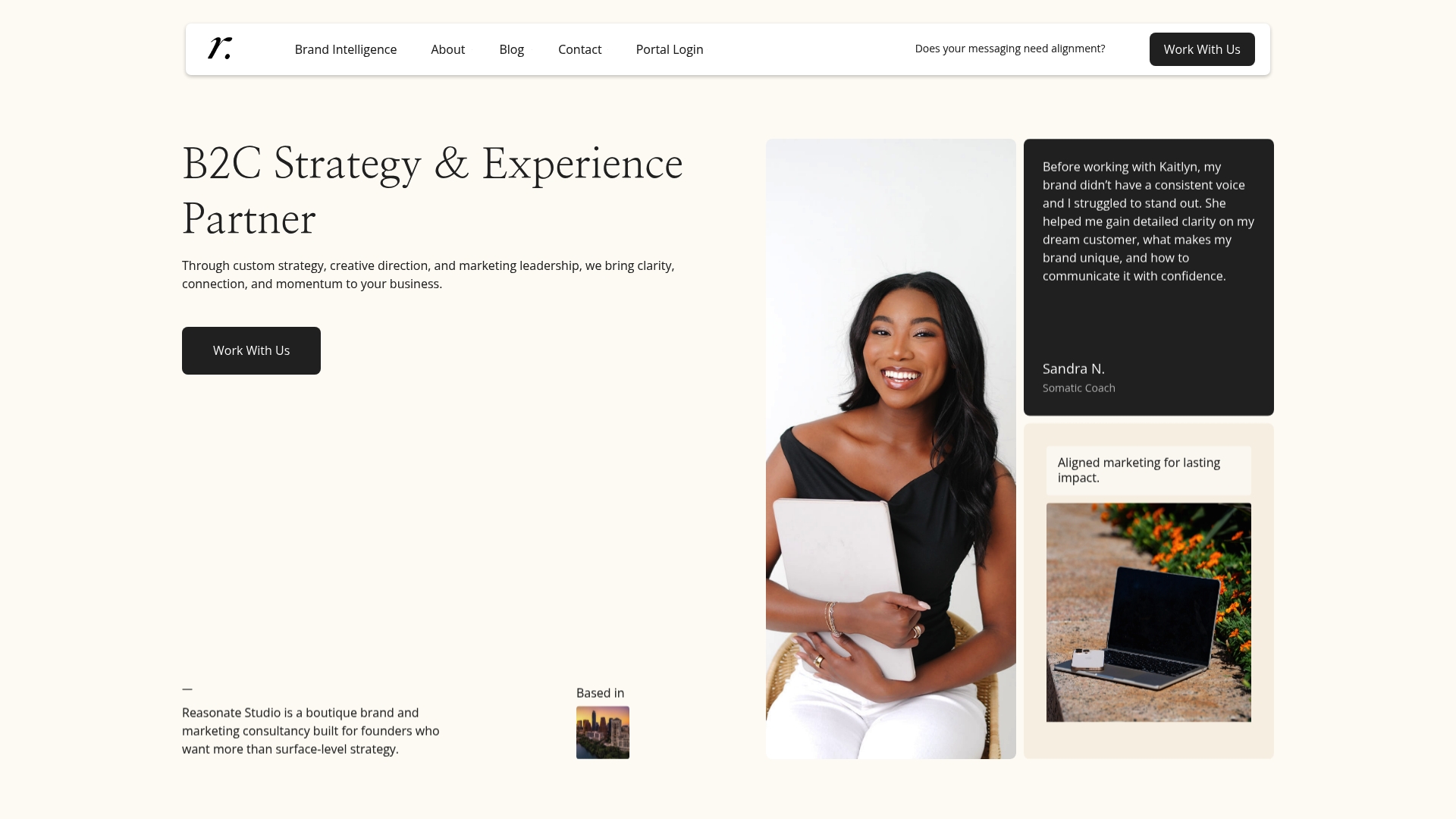Branding Strategies: Building Impactful Small Businesses

Discover how to develop a brand strategy step-by-step, from uncovering your core values to creating aligned messaging and driving long-term business growth.

Did you know that brands with a clear strategy are three times more likely to see rapid growth than those without one? Whether you are launching a new business or refreshing your identity, a practical brand strategy gives you a strong edge. A well-structured approach defines your purpose, attracts your best clients, and keeps your business moving forward with purpose and clarity.
In this critical first step, you will uncover the strategic core of your brand by defining its foundational elements. Think of this as creating the DNA that will guide every marketing and business decision you make moving forward.
Let’s start with mission. Your mission statement answers three fundamental questions: what you do, who you serve, and how you do it differently. Close your eyes and imagine explaining your business to a friend over coffee. What would you say? That conversational explanation is often the raw material for a powerful mission statement.
Next comes vision. This is your brand’s north star the aspirational future you want to create. It is not about current capabilities but the transformative impact you want to make. A great vision feels inspiring yet specific. For example, instead of saying “We want to help businesses grow” you might say “We empower entrepreneurs to build businesses that create generational wealth and meaningful community impact.”
Pro Tip: Your values are the non negotiable principles that connect your brand to your audience. They are not generic corporate speak but genuine commitments that reveal your brand’s authentic personality.
As you draft these foundational elements, remember they should feel true to you. Authenticity matters more than perfection. Your mission vision and values are not marketing fluff they are the strategic compass that will help you make aligned decisions and communicate with clarity.

In the next step, we will translate these foundational elements into a compelling brand narrative that attracts your ideal clients and sets you apart from competitors.
In this pivotal step, you will craft a crystal clear understanding of who you serve and how your brand uniquely stands out in the marketplace. Think of this as creating a precise roadmap that connects your brand directly to the people who need you most.
Audience definition starts with going beyond basic demographics. You want to understand not just who your ideal clients are but what keeps them up at night. What challenges do they face? What dreams are they trying to achieve? Imagine creating a detailed character sketch that feels so real you could have a cup of coffee with them.
Start by asking yourself deep questions. If your ideal client walked into a room what would they look like? What problems are they desperately seeking solutions for? What language do they use? This is about psychological and emotional mapping more than just age and income brackets.
Pro Tip: Your positioning is how you occupy a distinct mental space in your audience’s mind. It is not about being better than everyone else but about being meaningfully different.
Positioning requires you to understand the competitive landscape. What are other brands in your space doing? Where are the gaps? Your goal is to find a unique angle that makes your brand feel like the perfect solution for your specific audience.
The magic happens when your audience definition and positioning align perfectly. You are not just selling a service you are offering a tailored solution that speaks directly to your ideal client’s core desires and challenges.
In the next step, we will transform these insights into a compelling brand messaging framework that resonates and converts.
In this transformative stage, you will develop a messaging strategy that turns your brand from background noise into a clear compelling voice that resonates deeply with your ideal audience. This is about creating communication that not only captures attention but builds genuine connection.
Start by translating your mission vision and values into language that speaks directly to your audience’s heart. Your messaging needs to answer three critical questions: What problem do you solve? Why should someone care? What makes you uniquely qualified to help?
Think of your messaging like a conversation. If your brand could sit down with your ideal client and talk candidly what would you say? Your words should feel authentic personal and laser focused on the specific challenges your audience experiences. read more about our strategic messaging approach can help you nail this critical communication strategy.
Pro Tip: Consistency is king. Your messaging should feel like the same confident voice across every touchpoint from your website to social media to sales conversations.
Draft a core messaging framework that includes your primary value proposition elevator pitch and key differentiators. These are not static documents but living guidelines that evolve as you understand your audience better. Practice articulating your message in different lengths from a concise one liner to a more detailed explanation.
Remember that great messaging is not about sounding impressive. It is about making your audience feel understood. When your words genuinely reflect their hopes fears and aspirations you create an immediate emotional connection that transforms casual interest into true engagement.
In the next step we will bring your messaging to life visually creating a brand identity that matches the powerful narrative you have just crafted.
In this creative stage you will transform your strategic foundations into a visual and verbal language that tells your brand story powerfully and memorably. This is where your brand moves from abstract strategy to a tangible experience that people can see touch and feel.
Visual identity goes far beyond just selecting a logo. It is about creating a cohesive sensory experience that communicates your brand personality instantly. Consider how colors shapes and design elements can trigger specific emotional responses. Neuroscience research shows our brains process visual information incredibly quickly meaning your visual choices need to be intentional and aligned with your brand essence.
Start by selecting a color palette that reflects your brand personality. Warm colors might suggest passion and energy while cooler tones could communicate professionalism and calm. Your typography also speaks volumes about your brand character. Are you sleek and modern? Friendly and approachable? Sophisticated and elegant?
Pro Tip: Consistency is your secret weapon. Every visual element should feel like it belongs to the same family creating a unified brand experience across all platforms.
Your verbal identity is equally critical. This includes your tone of voice writing style and the specific language you use. Are you direct and authoritative? Playful and conversational? Scholarly and precise? These choices should flow naturally from your mission and values.
Think of your visual and verbal identity as your brand’s unique dialect. Just like people recognize friends by their distinctive way of speaking and moving your brand needs its own recognizable signature. explore our guide on brand storytelling to dive deeper into creating a memorable brand language.
Remember that great design is not about looking good it is about communicating who you are. Every color choice every word every visual element should serve your core brand story and connect emotionally with your audience.
In the next step we will bring everything together creating a comprehensive brand strategy that turns these elements into a powerful growth engine for your business.
This final step transforms your strategic brand work from a theoretical exercise into a living breathing business system. You will now ensure every single touchpoint tells a consistent story that attracts ideal clients and drives meaningful growth.
Implementation is about creating muscle memory for your brand. Think of it like choreographing a dance where every movement your business makes feels intentional and aligned. Your brand strategy needs to breathe through your website marketing materials sales conversations customer service interactions and internal communications.
Start by creating a comprehensive brand guide that becomes your team’s north star. This document should outline not just visual elements like logo usage and color palettes but also the nuanced communication guidelines that capture your brand voice. How do you want team members to write emails? Answer customer questions? Represent the brand in different contexts?
Pro Tip: Your brand implementation is a collaborative effort. Involve your entire team in understanding and embodying the brand strategy to create authentic alignment.
Map out all your current and potential brand touchpoints. This means examining everything from your website and social media to email signatures sales decks and customer onboarding processes. Each interaction is an opportunity to reinforce your brand story and create a cohesive experience. learn more about our strategic brand alignment approach to see how comprehensive implementation works.
Remember that brand alignment is not a one time project but an ongoing commitment. Your strategy will evolve as you understand your audience better and your business grows. Stay flexible yet consistent create systems that allow your brand to adapt while maintaining its core identity.
You have now completed a comprehensive brand strategy that goes beyond superficial marketing tactics. You have created a powerful framework that will attract your ideal clients communicate your unique value and set the foundation for sustainable business growth.
In this crucial final stage you will transform your brand strategy from a static document into a dynamic living system that continuously evolves and improves. Think of this as your brand’s performance review where you measure impact learn from real world results and make strategic adjustments.
Start by establishing clear performance metrics that go beyond traditional marketing measurements. These should connect directly to your original brand foundations capturing not just financial outcomes but also brand perception customer sentiment and strategic alignment. How are people talking about your brand? What emotional response are you generating? What conversations are you starting?
Listen deeply to your audience feedback. Modern research highlights the incredible power of electronic word of mouth meaning every social media comment customer review and online interaction provides valuable strategic intelligence. These touchpoints are not just feedback they are real time market research that can guide your next strategic moves.
Pro Tip: Create a regular rhythm of strategic review. Quarterly check ins allow you to stay agile without constantly changing direction.
Develop a systematic approach to gathering insights. This might include customer surveys social media sentiment analysis competitive research and direct feedback channels. explore our guide on brand performance tracking to build a robust evaluation framework.
Remember that refinement is not about wholesale changes but intelligent iterations. Small strategic adjustments based on real data can compound into significant competitive advantages. Your brand strategy should feel like a living breathing organism that adapts learns and grows.
Your brand strategy is now a powerful intentional system designed to attract the right clients communicate your unique value and create meaningful business growth. You have built something far more sophisticated than a marketing plan you have created a strategic roadmap for sustainable success.
![]()
Here’s a comparison of each brand strategy step and its core focus:
| Step | Focus Area | Key Objective |
|---|---|---|
| Step 1: Clarify Brand Foundations | Mission Vision Values |
Define core purpose and direction |
| Step 2: Define Audience & Positioning | Audience Profile Market Position |
Identify target clients and unique angle |
| Step 3: Craft Brand Messaging | Messaging Framework Value Proposition |
Communicate clear, authentic benefits |
| Step 4: Design Identity | Visual Elements Verbal Tone |
Create cohesive brand look and voice |
| Step 5: Implement & Align | Brand Guide Touchpoints |
Ensure consistency across all channels |
| Step 6: Evaluate & Refine | Performance Metrics Feedback Loops |
Measure impact and drive improvement |
Are you feeling stuck trying to bridge the gap between foundational brand strategy and real business growth? The article you just read highlights a familiar struggle for many entrepreneurs: you know your mission, you have the vision, but your messaging and identity still fail to connect or convert. It is common to feel lost in the day-to-day or unsure how to move from ideas to results. Gaps in alignment, unclear positioning, and inconsistent touchpoints drain both energy and budgets.

It is time to experience what strong strategy truly delivers. At Reasonate Studio, our proprietary Aligned Impact Model transforms the exact steps from this article into a system that not only clarifies your brand but also drives measurable action. We meet you where you are—whether you need a diagnostic check-up, hands-on partnership, or complete brand overhaul. If you are ready to turn clarity into momentum and get tailored guidance for every stage, visit our homepage to see how we can support your brand journey. Explore how our holistic approach to brand positioning and messaging creates confidence and growth you can measure. Take action now so your brand strategy becomes a living force driving your business forward.
To clarify your brand foundations, start by defining your mission, vision, and values. Write a mission statement that answers what you do, who you serve, and how you do it differently. Spend a week reflecting on these elements and refine them until they feel authentic to your brand.
Start by creating an in-depth profile of your ideal client. Go beyond basic demographics to analyze their challenges, aspirations, and the language they use. Dedicate a few days to gather insights through surveys or informal conversations to deepen your understanding.
Effective brand messaging involves translating your mission and values into language that resonates with your audience. Focus on answering what problem you solve, why it matters, and what makes you unique. Draft your core messaging framework in a concise format, aiming for 2-3 key phrases that capture your essence.
Your brand’s visual identity should include a defined color palette, typography, and design elements that align with your brand personality. Choose colors and fonts that evoke the right emotional responses, and aim for consistency across all marketing materials. Spend a week testing combinations to find what resonates best with your audience.
To ensure successful implementation, create a comprehensive brand guide that outlines visual elements and communication guidelines for your team. This document should serve as a reference for all brand touchpoints, ensuring coherence. Allocate time for regular team training sessions to reinforce these guidelines.
Evaluate your brand strategy by establishing clear performance metrics related to both financial outcomes and brand perception. Use customer feedback and social media analytics to gather insights about your brand’s impact. Conduct quarterly reviews to assess these metrics and adjust your strategy as needed.